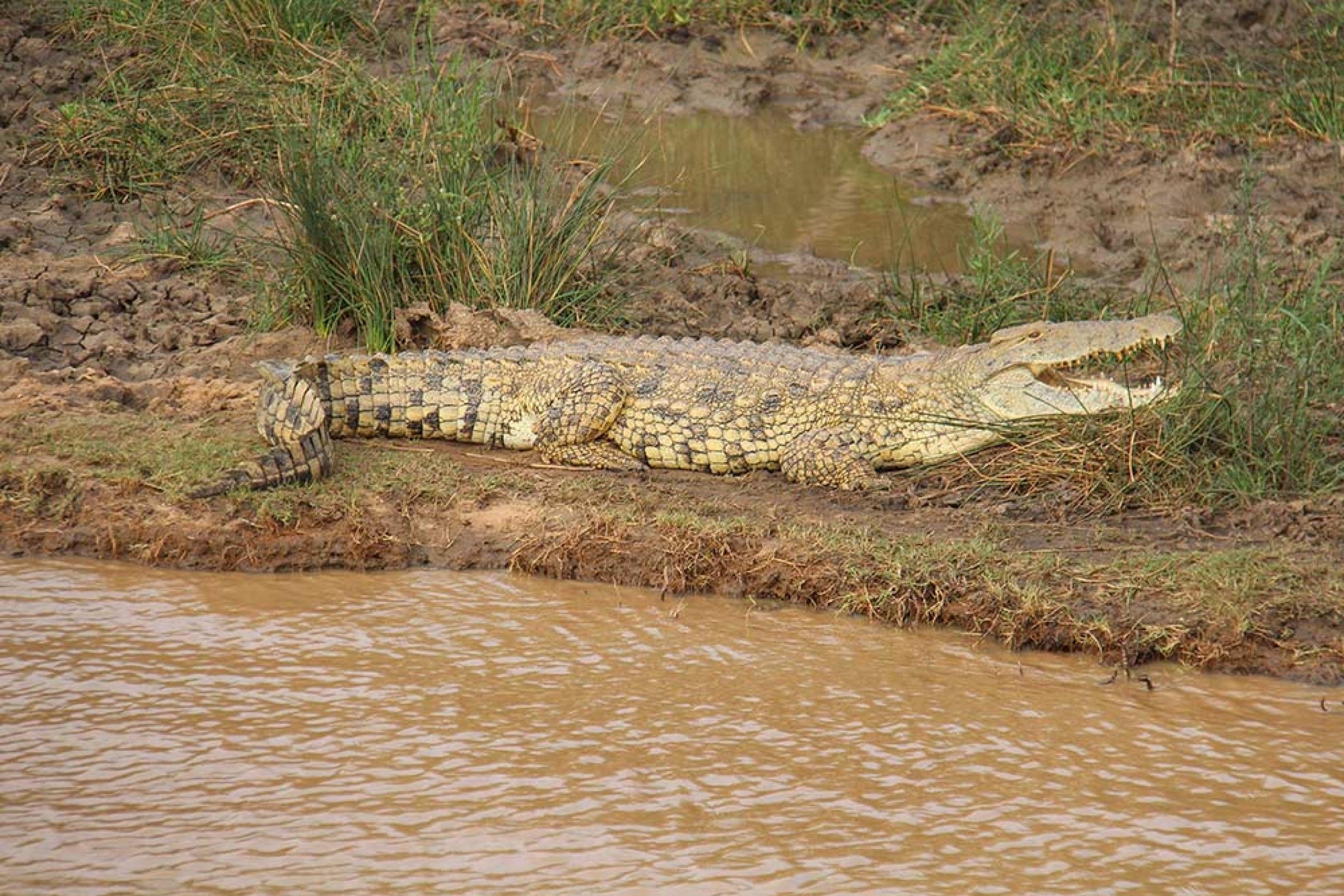
iSimangaliso – home of the Nile crocodile
20 January 2019

This week, sixty yearling Nile crocodiles were released into the kuNkazana Stream on the Eastern Shores section of the iSimangaliso Wetland Park World Heritage Site. These youngsters join the approximately 1000 adult crocodiles already living wild in the Park, predominantly in the Lake St Lucia estuarine system.
The hatchlings, which measure about 30cm long and were born almost 12 months ago, are the offspring of crocodiles in captivity at the St Lucia Crocodile Education Centre. The Centre, managed by Ezemvelo KZN Wildlife, was established in 1979 by the late Tony Pooley. Originally a research centre for the study of crocodiles, the centre has evolved into an educational and tourist facility as well as contributing a huge amount of knowledge towards the conservation of these reptiles.
Nile crocodiles (Crocodylus niloticus) are apex predators in the wetland – the largest freshwater predator in Africa – and while only a few will naturally survive to adulthood, iSimangaliso still boasts one of the most significant populations in Southern Africa. In a recent aerial count, the density of basking crocodiles in one section was recorded as the equivalent of 99 individuals per kilometre! Crocodiles are threatened by habitat removal, illegal killings, destruction of nesting sites and human disturbance, and although they are referred to as being of ‘least concern’ on the IUCN Red List, they are nonetheless listed as one of the country’s ‘Threatened or Protected Species’ (TOPS).
According to Mpume Ngcobo, Ezemvelo KZN Wildlife Conservation Manager at the St Lucia Crocodile Centre, “those of the released hatchlings that survive to adulthood could reach up to 5m in length, eventually weigh over 500kg and survive as long as 100 years.”
Studies on crocodiles by former Ezemvelo KZN Wildlife ecologist Dr Xander Combrink revealed some interesting finds. Most surprising of all was the discovery that a tagged crocodile removed from the lower reaches of Lake St Lucia and released at the False Bay section, turned up back in his ‘home turf’ after many weeks of determined navigating. There is so much yet to be learned about these prehistoric creatures – further highlighting the importance of iSimangaliso’s conservation status and ongoing efforts.
To learn more about these fascinating reptiles, book a visit to the St Lucia Crocodile Education Centre: +27 35 590 1386.
For more information on the iSimangaliso Wetland Park, visit our website at www.isimangaliso.com. Media enquiries should be directed to Debbie Cooper at